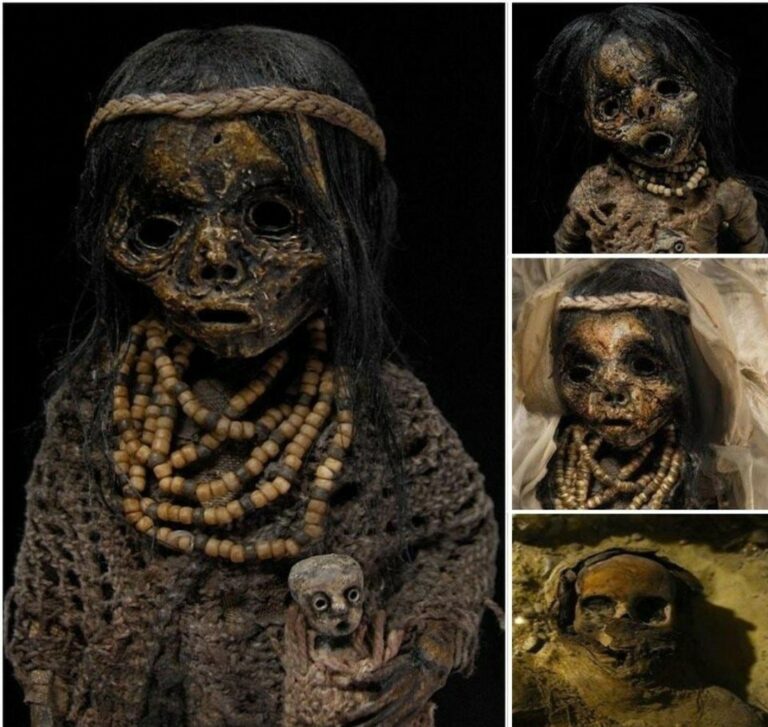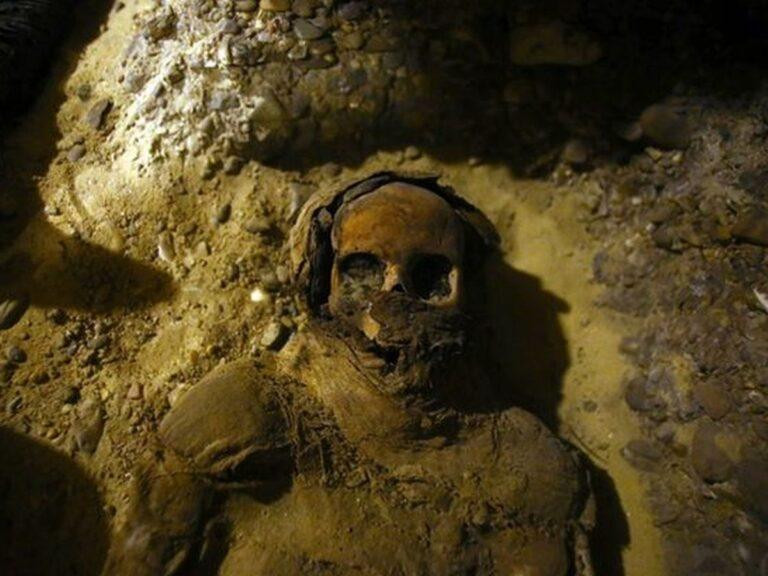Archaeologists have uncovered an extraordinary tomb dating back 4,000 years in the Egyptian desert. This remarkable discovery was made by a Spanish research team, led by Martina, during their investigation into the reign of Hatshepsut, Egypt’s first female pharaoh. The team stumbled upon the unopened tomb nestled within the rugged cliffs, a find documented by Channel 4’s series, Secrets of Egypt’s Valley of the Kings. The show captured the meticulous and delicate process of excavation, showcasing the challenges faced by the experts as they carefully uncovered the tomb’s exterior and prepared to break through its ancient seals. Despite facing treacherous conditions, their efforts led to an incredible discovery that shed light on the distant past.
Battling Nature’s Wrath
The path to uncovering the tomb was fraught with challenges, as the narrator of the documentary vividly described: “Martina’s found a coffin that’s remained sealed for nearly 4,000 years. But first, she has to reach the tomb – a Saharan sandstorm is blowing in from the south. The initial 200-meter journey to the burial site is a battle.” The relentless wind and blowing sand made the trek perilous, but the team remained undeterred, driven by their commitment to unraveling the secrets locked within the ancient burial site.

The harsh environment of the desert tested the archaeologists’ resolve, but their determination to uncover history triumphed over the extreme conditions. Step by step, they pressed on, knowing that their findings could provide invaluable insights into life and death in ancient Egypt.
Unveiling the Ancient Coffin
Once the team reached the tomb’s interior, the real work began. The archaeologists carefully removed layers of debris and dust that had accumulated over millennia, revealing a terracotta coffin. With great care, they prepared to open the coffin, anticipating what lay within after its 4,000-year concealment. Martina, visibly anxious, remarked on the eerie appearance of the coffin, exclaiming, “It’s very heavy, but be careful, it looks very scary. It’s like a scary movie – if this mummy starts moving, I’m going as fast as I can.”
This moment of truth was both thrilling and tense, as the team painstakingly lifted the lid of the coffin. The discovery that followed was not what they expected, but it offered an equally fascinating glimpse into the past.
An Unexpected Find
To the astonishment of the team, the coffin did not contain a mummy as initially presumed. Instead, they uncovered a skeleton wrapped in black material. The narrator explained, “The terracotta coffin contains no mummy but a skeleton shrouded in black material. They hope to find out why this person was interred and how they prepared for the afterlife.” This unexpected find posed new questions for the team. Why was this individual wrapped in black material? What could this signify about their burial practices or beliefs about the afterlife?
The discovery underscored the complexity of ancient Egyptian funerary traditions, revealing that not every burial adhered to the practices most commonly associated with the era, such as mummification. The black material, its composition, and its significance became the focus of further investigation.
Unraveling the Identity of the Ancient Woman
As the archaeologists worked to identify the remains, they carefully unwrapped the layers of material encasing the skeleton. Dr. Botella, a key member of the team, revealed that the skeleton belonged to a woman. “I’m sure it’s a woman. The age – no more than 70,” she announced. This revelation was particularly intriguing, as the average life expectancy in ancient Egypt was significantly lower than modern standards.

The idea that this woman had lived to such an advanced age was both rare and remarkable. High infant mortality rates, the prevalence of infections, and the dangers of childbirth often meant that most individuals did not survive beyond their 20s or 30s. Yet this woman had defied the odds, living well into her golden years, a testament to her resilience and perhaps her privileged position in society.
Defying the Odds of Ancient Life
In 2019, Dr. Bardonova provided further context for the significance of this discovery, stating, “The average life expectancy was about 25, but far more women died during childbirth. When you have someone who is over 70, I don’t want to say I’m surprised, but it’s nice to know – it’s nice to get someone who is really old.” This contrast with the lives of famous figures like Tutankhamun, who is believed to have died at just 18, highlighted the uniqueness of this woman’s long life. Her skeleton, preserved for thousands of years, spoke volumes about her life and the environment in which she lived.
The discovery of this woman, who had endured and thrived in a time of significant challenges, added depth to the understanding of ancient Egyptian society. It offered a rare glimpse into the life of an individual who had experienced an era of profound cultural and historical significance.
A Window into the Past
This ancient woman’s story is a reminder of the extraordinary achievements of archaeologists who bring the past to life through their discoveries. Every artifact, every tomb, and every burial tells a story, connecting us to those who lived thousands of years ago. This particular find, with its unexpected twists and profound implications, underscores the importance of preserving and studying the treasures of antiquity.
The painstaking work of Martina and her team has not only uncovered a long-forgotten tomb but also offered new insights into the resilience of those who lived in ancient Egypt. Their efforts have enriched our understanding of the complexities of ancient life, reminding us of the enduring human spirit that transcends time.





